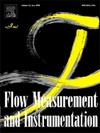基于上斜管道压力数据的多相流流型识别轻量级实时网络
IF 2.3
3区 工程技术
Q2 ENGINEERING, MECHANICAL
引用次数: 0
摘要
在油气管道领域,多相流现象是普遍存在的。为了减轻多相流带来的各种潜在危害,准确识别流型是至关重要的。目前的流型识别研究通常采用图像和多普勒超声信号等数据。这类数据存在明显的缺点:图像数据通用性差,仅适用于透明管道,多普勒超声信号采集复杂。因此,本文采用的是更普遍适用、更容易采集的向上倾斜管道压力数据。以深度学习为代表的机器学习方法具有很强的特征提取能力。但目前研究中提出的深度学习模型实时性差,参数尺寸大,不适合在工业现场广泛使用的资源受限设备上部署。针对上述问题,本文在YOLOv8轻量化模型的基础上,提出了一种新的轻量化YOLOv8_1D网络模型。该模型参数少,实时性高,利用普遍适用的一维压力数据进行训练,旨在精确识别各种流型。在数据预处理阶段,采用z-score标准化,防止梯度爆炸,提高模型性能。为了进一步提高模型的性能,在数据预处理阶段引入了自适应滤波器组生成方法——经验小波变换。最终的实验结果表明,EWT可以有效地从压力数据中提取特征,使YOLOv8_1D模型的准确率达到97.37%,高于其他对比模型,满足实时性要求(63个样本/秒)。本文的源代码可在https://github.com/JiuYu77/flow_identification上公开获得。本文章由计算机程序翻译,如有差异,请以英文原文为准。
Lightweight real-time network for multiphase flow patterns identification based on upward inclined pipeline pressure data
Within the realm of oil and gas pipelines, multiphase flow phenomena are universal existence. To mitigate the various potential hazards caused by multiphase flow, accurate recognition of flow patterns is crucial. Current research on flow pattern identification typically employs data such as images and Doppler ultrasound signals. These types of data have obvious drawbacks: image data have poor universality and are only applicable to transparent pipelines, while Doppler ultrasound signal acquisition is complex. Therefore, this article uses upward inclined pipeline pressure data that are more generally applicable and easier to collect. Machine learning methods represented by deep learning have strong feature extraction capabilities. But the deep learning models proposed in current research have poor real-time performance and large parameter size, making them unsuitable for deployment on resource-constrained devices which are widely used in industrial sites. In response to the above problems, this paper proposes a novel lightweight YOLOv8_1D network model based on the YOLOv8 lightweight model. This model has fewer parameters, higher real-time performance, and utilizes universally applicable one-dimensional pressure data for training, aiming for precise identification of various flow patterns. During the data preprocessing stage, z-score standardization is applied to prevent gradient explosion and enhance model performance. To further improve model performance, the Empirical Wavelet Transform, an adaptive filter banks generation method, is introduced during the data preprocessing phase. The final experimental results show that EWT can effectively extract features from pressure data, enabling the YOLOv8_1D model to achieve the accuracy of 97.37 % which is higher than other contrast models and meet real-time requirements (63 samples/second). The source code of this paper is publicly available at https://github.com/JiuYu77/flow_identification.
求助全文
通过发布文献求助,成功后即可免费获取论文全文。
去求助
来源期刊

Flow Measurement and Instrumentation
工程技术-工程:机械
CiteScore
4.30
自引率
13.60%
发文量
123
审稿时长
6 months
期刊介绍:
Flow Measurement and Instrumentation is dedicated to disseminating the latest research results on all aspects of flow measurement, in both closed conduits and open channels. The design of flow measurement systems involves a wide variety of multidisciplinary activities including modelling the flow sensor, the fluid flow and the sensor/fluid interactions through the use of computation techniques; the development of advanced transducer systems and their associated signal processing and the laboratory and field assessment of the overall system under ideal and disturbed conditions.
FMI is the essential forum for critical information exchange, and contributions are particularly encouraged in the following areas of interest:
Modelling: the application of mathematical and computational modelling to the interaction of fluid dynamics with flowmeters, including flowmeter behaviour, improved flowmeter design and installation problems. Application of CAD/CAE techniques to flowmeter modelling are eligible.
Design and development: the detailed design of the flowmeter head and/or signal processing aspects of novel flowmeters. Emphasis is given to papers identifying new sensor configurations, multisensor flow measurement systems, non-intrusive flow metering techniques and the application of microelectronic techniques in smart or intelligent systems.
Calibration techniques: including descriptions of new or existing calibration facilities and techniques, calibration data from different flowmeter types, and calibration intercomparison data from different laboratories.
Installation effect data: dealing with the effects of non-ideal flow conditions on flowmeters. Papers combining a theoretical understanding of flowmeter behaviour with experimental work are particularly welcome.
 求助内容:
求助内容: 应助结果提醒方式:
应助结果提醒方式:


